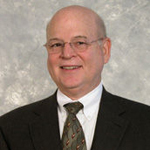With an additional 30 million people to be added to the rolls of the medically insured in this country over the next year, common wisdom is that they will all be going to the emergency department (ED). That’s what happened when Massachusetts added more enrollees to their state funded insurance program, to the tune of 3 million additional ED visits between 2004 and 2008. A key driver behind this was that there were not enough primary care physicians (PCPs) to meet the need. As the Affordable Care Act (ACA) now rolls out across the country seniors will increasingly feel the pinch. Their numbers are increasing as the baby boom ages, while at the same time many PCPs are becoming reluctant to take on Medicare patients due to payment reductions.
I predict that non-physician providers and new models of providing primary care will present themselves to fill the gap in primary care. Nurse practitioners (NPs) are already trying to rewrite state laws to allow themselves to practice independently, and several states already give NPs many of the powers the physicians have. The American Association of Colleges of Nursing is also proposing that they add a "PhD" to their training; and California Healthline is reporting that California State Senator Ed Hernandez is planning on introducing legislation this month to enable nurse practitioners to establish independent practices. Physician Assistants (PAs) will also see new opportunities to increase the scope of their practices in the reports of this proposed legislation. Over forty percent of Vituity’s clinical hours are already provided by PAs and NPs, and I believe we will surpass 50% or more in the very near future.
I agree with Carmella Castellano-Garcia, President/CEO of California Primary Care Association, who advocates for the advantage in a team approach. As these rapid changes unfold in response to the physician shortage, there could be a lot of benefits to a team-based model of care, where a patient would be treated by a team of providers and not just one physician.
Organizations interested in additional sources of revenue could be tempted to set up new programs for primary care under potential government sponsorships, an example being the payment bump outlined in the ACA. Another source of revenue is the trend of Urgent Care Centers that provide episodic care to patients outside of the ED at reduced cost. In fact, the Urgent Care Association of America (UCAOA) collaborates with the Joint Commission, a body that accredits healthcare organizations. This collaboration could result in new facilities for primary care. And as a sign of this aggressive growth, I just got an invitation to join the UCAOA.
Government and health insurance plans will be looking beyond the ED for less expensive places to provide primary as well as episodic care. And patients will be seeking to obtain their primary care in places that are more convenient, faster, and less costly than the ED. As new sources of primary care arise, there could be a lot of competition for their visits.
The Medicare Sustainable Growth Rate (SGR), sequestration, and increasing overhead due to government regulation are bringing about many changes in primary healthcare that will show up over the coming years. This new environment will only bolster the need for Acute Care Continuum medical groups, those that practice ambulatory & urgent care and not just emergency and hospitalist medicine.






















